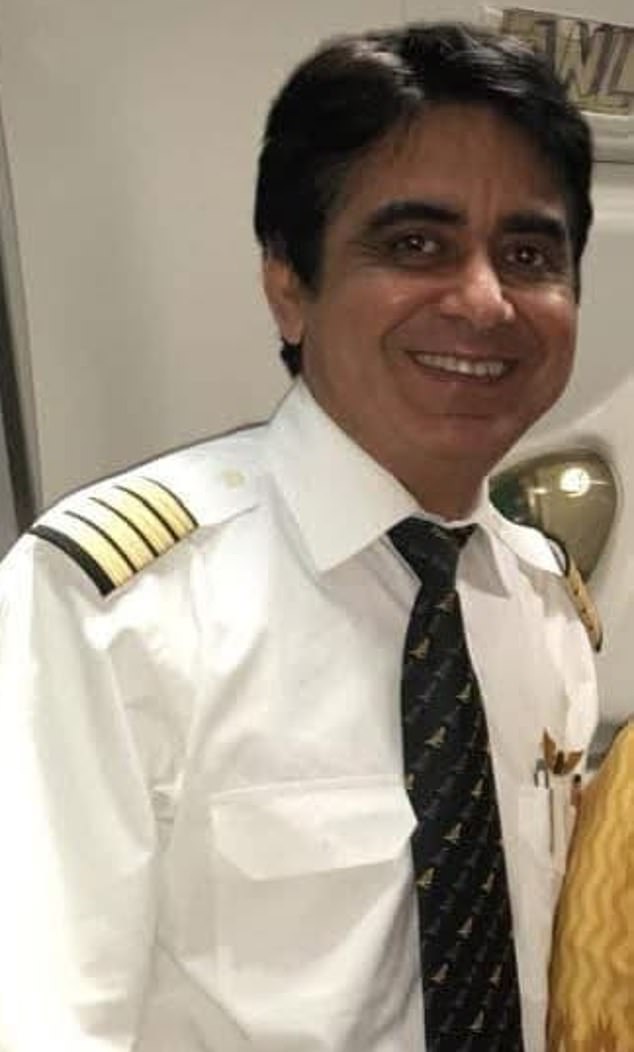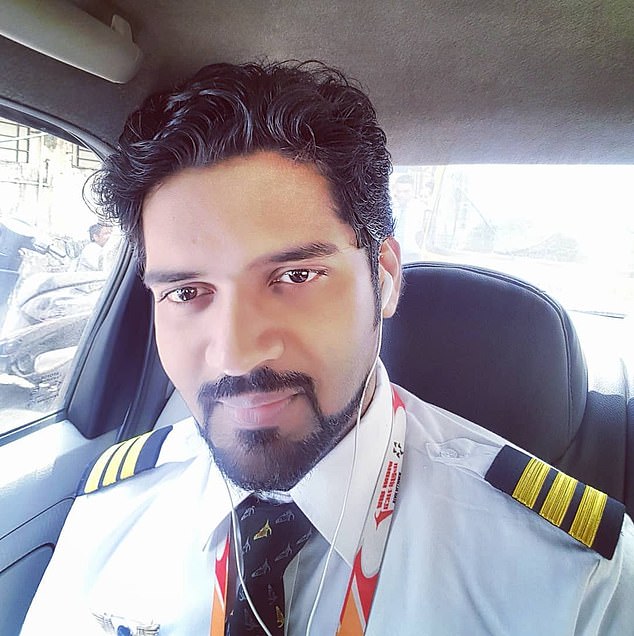A death toll of 260, more than four weeks of feverish theories and a global public desperate for reassurance that it is still safe to fly.
In the absence of hard facts, the world remains captivated by one question: what caused Air India Flight 171 to explode into a fireball shortly after taking off from the western Indian city of Ahmedabad on June 12?
On Saturday, investigators finally published a preliminary report into the disaster which, at 15 pages long, appeared to omit basic information.
However it made one crucial finding: that the fuel control switches had been moved to the ‘cut-off’ position shortly after the plane took off for London, starving the jet’s engines of fuel.
Online speculation is now running rampant as to how this could have happened, boosted by further claims yesterday that one of the pilots had depression and mental health issues.
So could this catastrophe really have been a deliberate act of mass murder by a suicidal pilot? Here, we address the five most glaring questions investigators have yet to answer.
What happened in the cockpit in final seconds?
Oddly, we don’t know. The preliminary findings reveal almost nothing of the pilot and co-pilot’s final conversation.
Page 14 of the report, compiled by India’s Aircraft Accident Investigation Bureau (AAIB), includes only a brief paragraph: ‘In the cockpit voice recording, one of the pilots is heard asking the other why did he cut off [the fuel]. The other pilot responded that he did not do so.’

Captain Sumeet Sabharwal, 56, was an experienced pilot and was just months from retirement

Co-pilot Clive Kunder, 32. The full transcript of the cockpit audio has not been released, so questions remain over how fuel to the plane’s engine was cut

The wreckage of flight 171. The crash killed 260 people, including 19 who were on the ground
There’s no indication of which man spoke first: Captain Sumeet Sabharwal, who was just months from retirement at the age of 56, or his 32-year-old co-pilot Clive Kunder.
Apart from the summarised dialogue, the only confirmed words are the distress call, ‘Mayday! Mayday! Mayday!’ transmitted less than five seconds before impact.
Former airline pilot Marco Chan, senior lecturer in aviation operations at Buckinghamshire New University, warns it is ‘notable’ that the AAIB has not released the full transcript of the cockpit voice recording. He adds: ‘Without that audio, we’re still missing a vital piece of the puzzle.’
How was the fuel cut off?
Using information from the two flight recorder ‘black boxes’, the report confirms that the fuel control switches were moved from the ‘run’ position to the ‘cut-off’ position three seconds after lift-off. Online commentators have suggested equipment failure. They point to an advisory bulletin from the US Federal Aviation Administration (FAA) seven years ago warning that the locking mechanism on these switches could fail.
However Captain Steve Scheibner, an American Airlines pilot and former US Navy commander, has dismissed that. He says the FAA’s warning came amid concerns that the levers could be installed upside-down. Clearly that was not the case with Flight 171, because those switches had been functioning correctly since the plane entered service 11 years ago.
Captain Scheibner, who has more than 765,000 followers on YouTube, also scoffs at the idea that a bumpy runway might have jolted the switches.
Firstly, such a malfunction has never been recorded before. Secondly, the mechanism is designed to withstand vibration or accidental jolting – the levers have to be tugged outwards as they are manipulated up or down.
Thirdly, and most tellingly, the fuel cut-off activates a back-up power source called the Ram Air Turbine (RAT), which pops out from the underside of the aircraft when in use. Video of the plane immediately before the crash shows the RAT did not deploy until the Boeing 787 Dreamliner was airborne – so the fuel cut-off must have occurred after take-off.
A computer failure is also out of the question, according to Julian Bray, an aviation security expert who has advised on some of the deadliest air disasters of the past 40 years. ‘The software cannot override the switch mechanism,’ he says. ‘If there had been issues of that type, all sorts of warning lights would have come on like Blackpool Illuminations to let the pilots know that something was terribly wrong.’
Did one of the pilots switch it off?
First Officer Kunder was flying the plane. Though he was the junior of the pair, this is standard practice, as it allows pilots to gain experience while being observed by a senior colleague.
More attention has been focused on Captain Sabharwal, who had just three flights remaining before he planned to retire and be a full-time carer for his 90-year-old father.
A fellow pilot and aviation safety expert, Mohan Ranganathan, told the Telegraph: ‘I have heard from several air India pilots who told me he had some depression and mental health issues. He had taken medical leave for that in the last three to four years. But he must have been medically cleared by the company doctors.’
But international aviation lawyer James Healy-Pratt, who is representing the families of 20 Flight 171 victims, warns: ‘It is too early to come to conclusions such as suicide or mass homicide.
‘Put yourself into the shoes of one of the families. It’s one thing to lose loved ones from an accident. It’s very different to lose loved ones who suddenly become victims of an intentional crime.’
Could someone else have touched switch?
Indeed, as Mr Bray points out, a darker possibility exists.
‘The report has pointed the finger at possible pilot error or human failing. So, for now, we have to look at pilot error or – worse – sabotage, with the focus on who was on the flight deck.’
While the pilot and co-pilot were the only two men confirmed to have been in the cockpit at the time, Mr Bray highlights that there were also two ‘jump seats’ behind them. Could it have been someone sitting there?
‘Often pilots and cabin crew will hitch a lift if there are no passenger seats available,’ he says. ‘Someone in one of the jump seats could’ve been feeling suicidal, leaned over and turned the switches.’
Is this a cover-up?
Far from stemming the flow of conspiracies, the flimsy findings of the AAIB report leave several question marks. But if Captain Sabharwal had been depressed and cleared to fly, the implications for Air India are seismic.
Not only does this raise doubts about what screening precautions the company takes but, more chillingly, it asks: are other airlines any better?
In the wake of the Germanwings Flight 9525 crash in March 2015, when 28-year-old co-pilot Andreas Lubitz killed himself and 149 others by deliberately crashing his Airbus 320 in the Alps, a survey by Harvard psychologists found that 4.1 per cent of airline pilots reported having suicidal thoughts within the previous two weeks.
The implications of that are horrific. For once, the online hysteria might even be justified.












